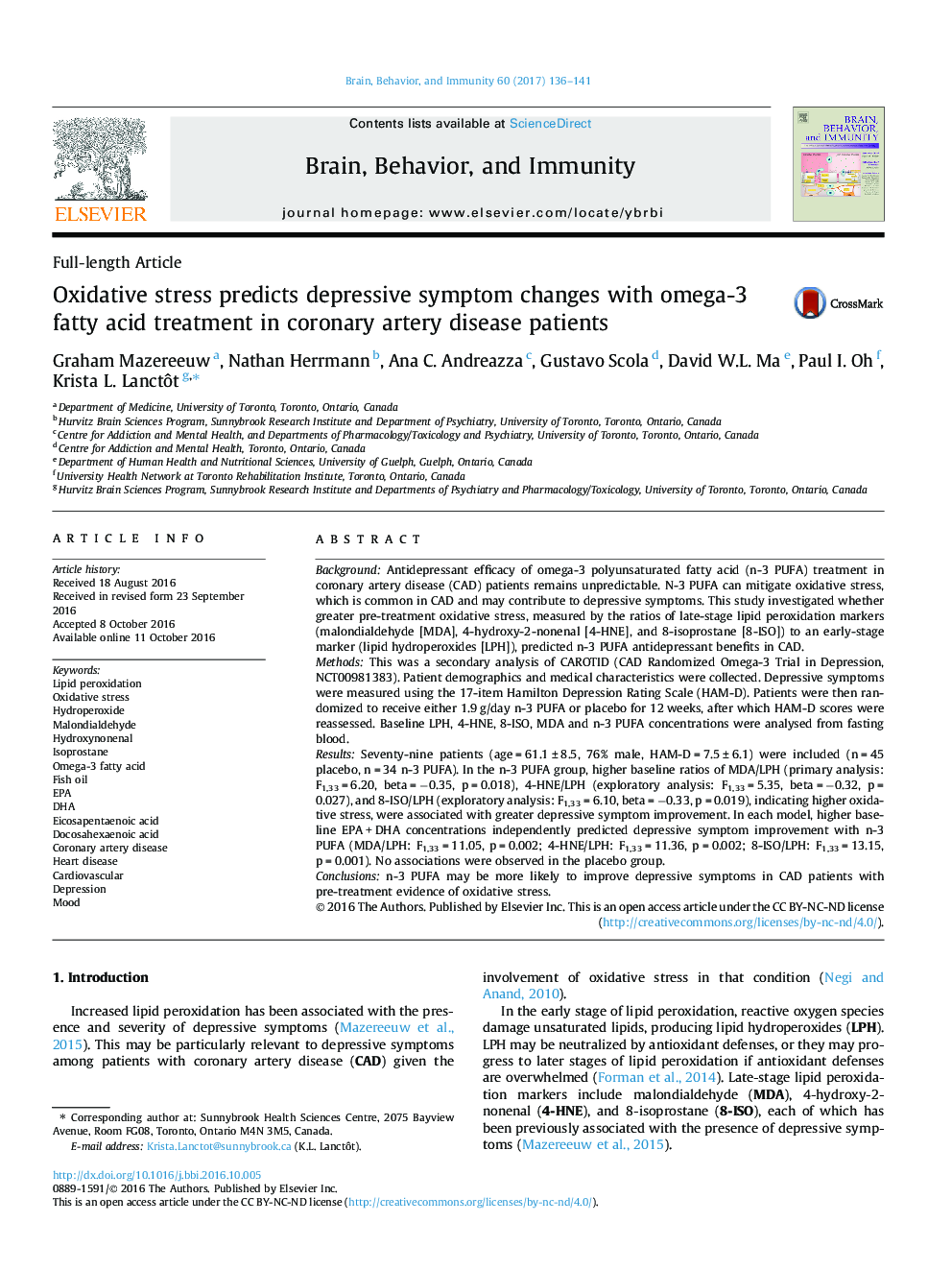| کد مقاله | کد نشریه | سال انتشار | مقاله انگلیسی | نسخه تمام متن |
|---|---|---|---|---|
| 5040743 | 1473907 | 2017 | 6 صفحه PDF | دانلود رایگان |
- Baseline oxidative stress was measured prior to omega-3 fatty acid treatment.
- Greater oxidative stress predicted greater improvement in depression with treatment.
- Baseline omega-3 fatty acid concentrations also predicted treatment effects.
BackgroundAntidepressant efficacy of omega-3 polyunsaturated fatty acid (n-3 PUFA) treatment in coronary artery disease (CAD) patients remains unpredictable. N-3 PUFA can mitigate oxidative stress, which is common in CAD and may contribute to depressive symptoms. This study investigated whether greater pre-treatment oxidative stress, measured by the ratios of late-stage lipid peroxidation markers (malondialdehyde [MDA], 4-hydroxy-2-nonenal [4-HNE], and 8-isoprostane [8-ISO]) to an early-stage marker (lipid hydroperoxides [LPH]), predicted n-3 PUFA antidepressant benefits in CAD.MethodsThis was a secondary analysis of CAROTID (CAD Randomized Omega-3 Trial in Depression, NCT00981383). Patient demographics and medical characteristics were collected. Depressive symptoms were measured using the 17-item Hamilton Depression Rating Scale (HAM-D). Patients were then randomized to receive either 1.9 g/day n-3 PUFA or placebo for 12 weeks, after which HAM-D scores were reassessed. Baseline LPH, 4-HNE, 8-ISO, MDA and n-3 PUFA concentrations were analysed from fasting blood.ResultsSeventy-nine patients (age = 61.1 ± 8.5, 76% male, HAM-D = 7.5 ± 6.1) were included (n = 45 placebo, n = 34 n-3 PUFA). In the n-3 PUFA group, higher baseline ratios of MDA/LPH (primary analysis: F1,33 = 6.20, beta = â0.35, p = 0.018), 4-HNE/LPH (exploratory analysis: F1,33 = 5.35, beta = â0.32, p = 0.027), and 8-ISO/LPH (exploratory analysis: F1,33 = 6.10, beta = â0.33, p = 0.019), indicating higher oxidative stress, were associated with greater depressive symptom improvement. In each model, higher baseline EPA + DHA concentrations independently predicted depressive symptom improvement with n-3 PUFA (MDA/LPH: F1,33 = 11.05, p = 0.002; 4-HNE/LPH: F1,33 = 11.36, p = 0.002; 8-ISO/LPH: F1,33 = 13.15, p = 0.001). No associations were observed in the placebo group.Conclusionsn-3 PUFA may be more likely to improve depressive symptoms in CAD patients with pre-treatment evidence of oxidative stress.
Journal: Brain, Behavior, and Immunity - Volume 60, February 2017, Pages 136-141
